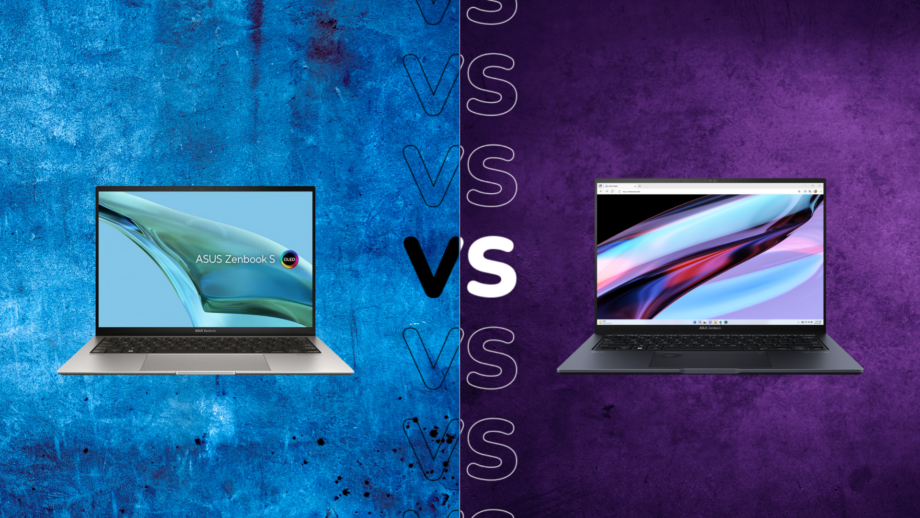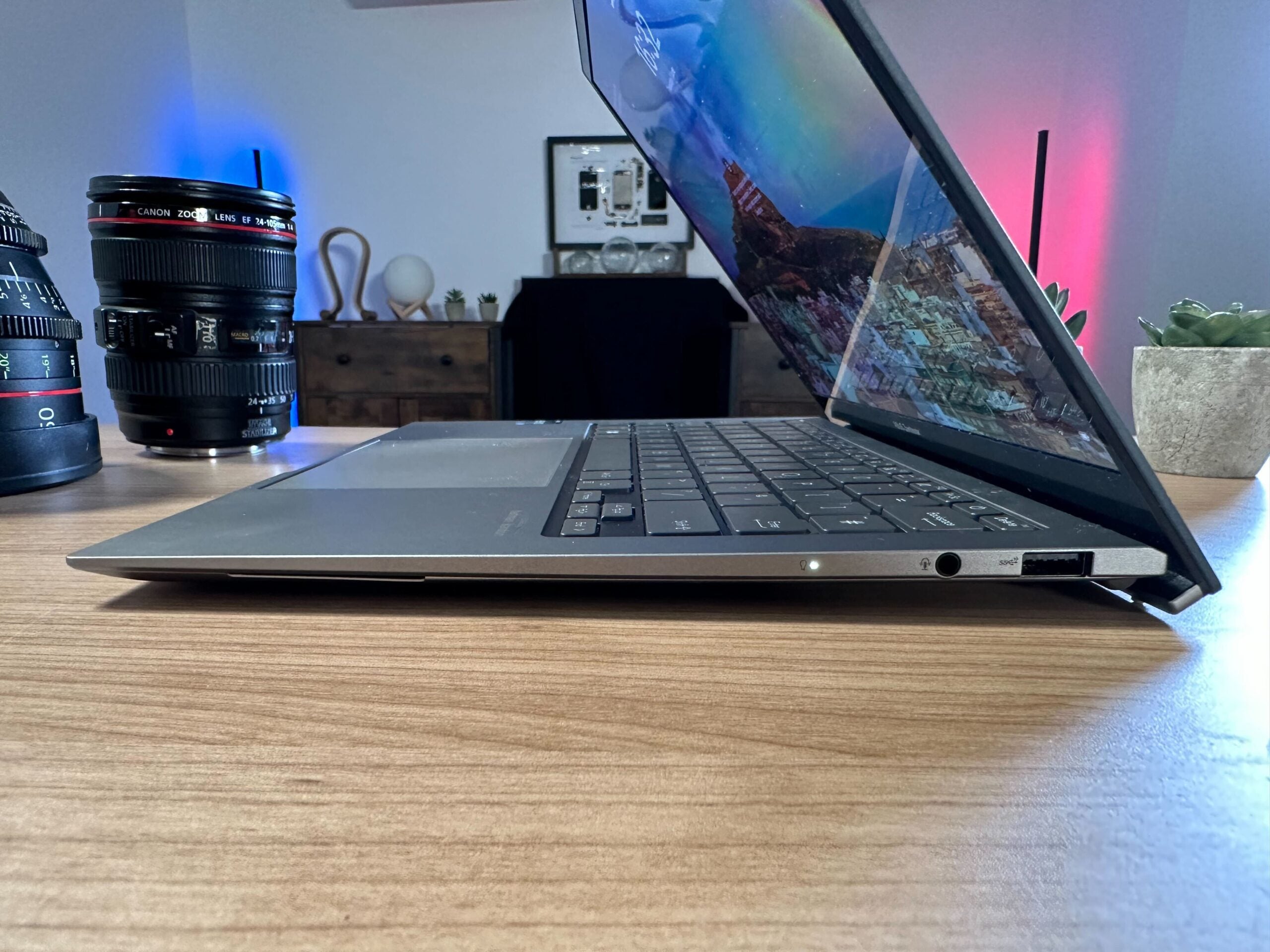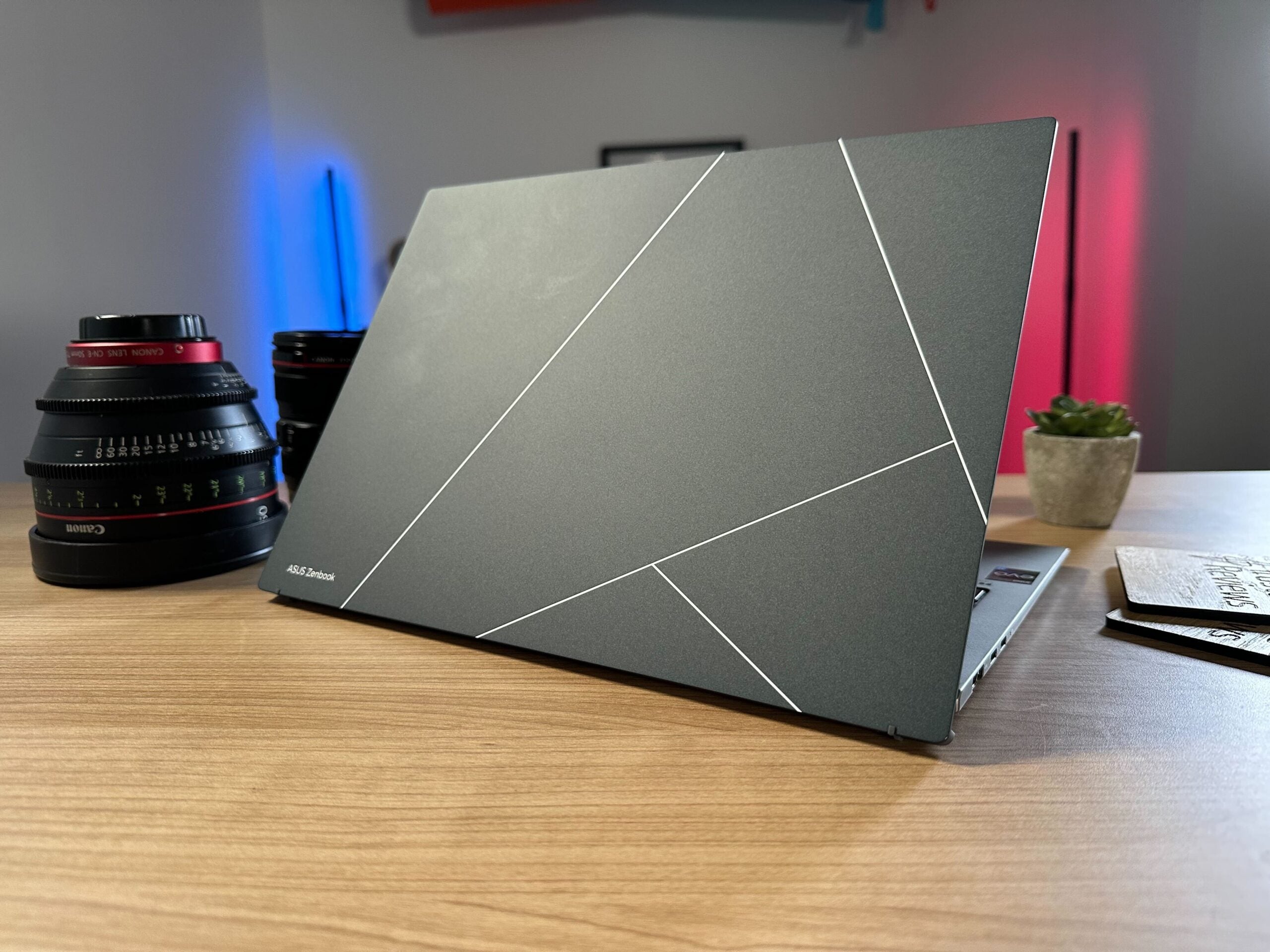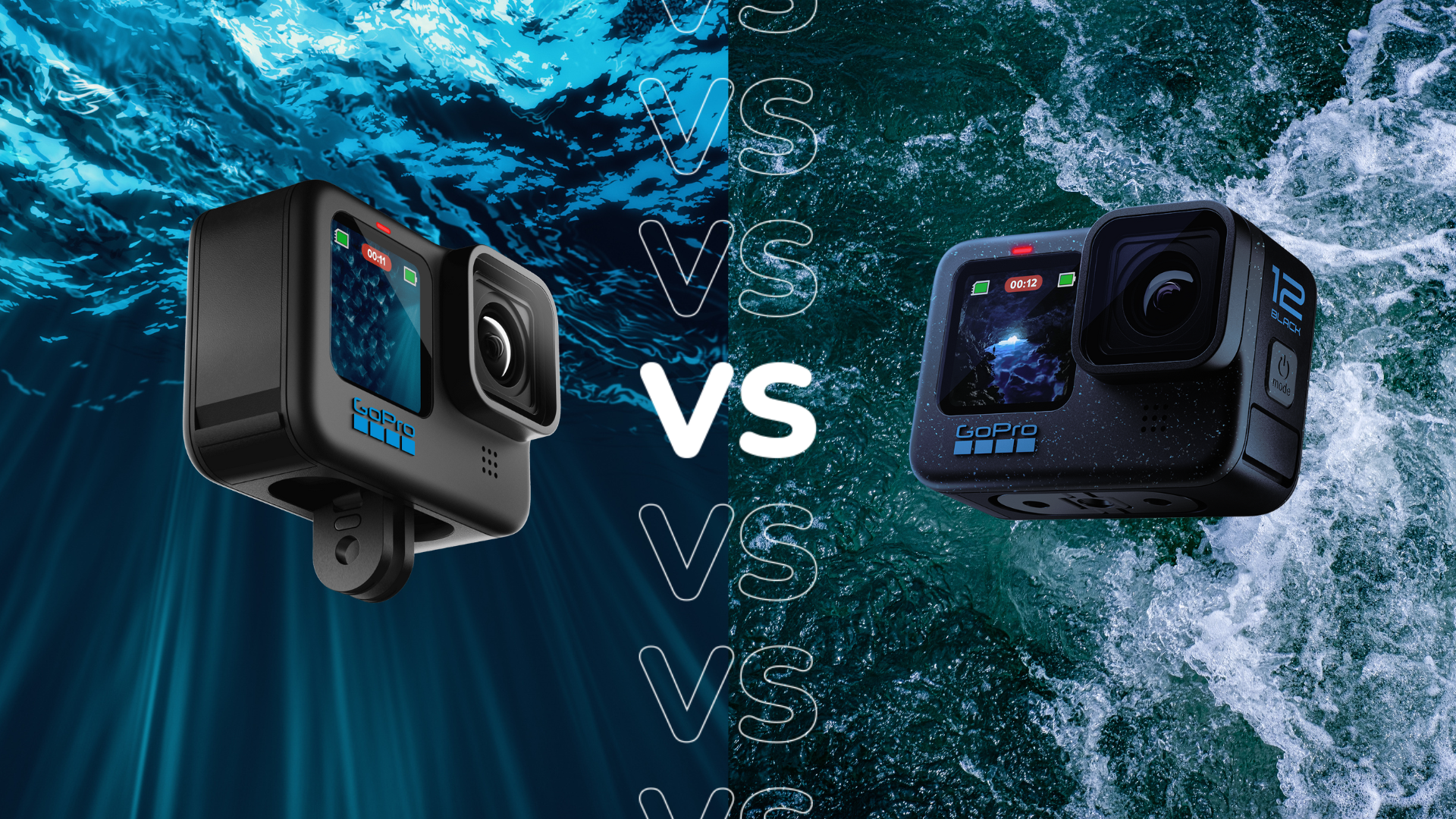Asus Zenbook S 13 OLED vs Asus Zenbook Pro 14 OLED

Asus has launched a wide variety of laptops in 2023. It’s great to have so many options, but all of the different model names can become a little confusing when browsing through online retailers.
Two of the standout laptops from Asus this year include the Zenbook S 13 OLED and the Zenbook Pro 14 OLED. They sound like similar laptops when solely judging the names, but there are actually some significant differences.
We’ve reviewed both laptops, so we’ve decided to create this guide to highlight the key differences between the two laptops. Check them out below:
Zenbook Pro 14 OLED offers high graphics performance
The biggest feature that separates these two laptops is the inclusion of a discrete graphics chip inside the Zenbook Pro 14 OLED – this is what the Pro moniker indicates.
The Zenbook Pro 14 OLED offers up the option of either one of Nvidia’s RTX 4060 or RTX 4070 GPUs, which allows the laptop to engage in demanding graphical workloads such as video editing and 3D animation. It also opens the door for high-end gaming, despite the Zenbook Pro not strictly being designed for such use cases.
Meanwhile, the Asus Zenbook S 13 OLED is limited to the integrated Intel Iris Xe graphics inside the processor – that’s still capable of entry-level video editing and the like, but expect a significant difference in performance speed.
Our benchmark scores demonstrate the gulf in graphics performance. In the 3DMark Time Spy test, the Asus Zenbook S 13 OLED achieved a score of 1589, while the Zenbook Pro 14 OLED (with an RTX 4070) saw a whopping 11,697 result. If you want a laptop for content creation and gaming, the Pro model is the obvious choice.


Zenbook Pro 14 OLED has an SD card reader
Both laptops have been fitted with a respectable number of ports including USB-A, Thunderbolt 4, HDMI 2.1 and a headphone jack. But the Zenbook Pro steals a slight advantage with the addition of an SD card reader.
If you plan on editing photos, then a built-in SD card reader should make it a lot easier to transfer all of your snaps to your laptop. It’s still possible to do so with the Zenbook S 13 OLED, but you’ll need a USB-C adaptor, which makes the process a little more fiddly.
The SD card reader’s inclusion on the Zenbook Pro 14 OLED once again highlights this laptop’s credentials in the creator space. It also has other features that lend itself to this segment in the market, including a 120Hz refresh rate, near-perfect colour reproduction and a dial pad that offers rotary control for apps such as Premiere Pro and Photoshop.
Zenbook S 13 OLED is more portable
Portability is one of the main selling points of the Asus Zenbook S 13 OLED. It weighs a remarkably light 1kg, making it easy to hold in one hand or carry in a bag without any strain.
In comparison, the Asus Zenbook Pro 14 OLED comes in with a weight of 1.65kg. That’s actually impressively light for a laptop with its level of performance, but that extra 650 grams will still make a big difference. It’s not so easy to hold with one hand, and carrying it around in a rucksack all day will likely cause aches and pains.
The Zenbook Pro is also thicker, with a height of 17.9mm compared to the 11.8mm size of the Zenbook S 13 OLED, making the latter easier to fit into a compact bag.
It’s worth remembering that you are getting a slightly larger screen with the Zenbook Pro (14.5 inches) compared to the Zenbook S 13 OLED (13.3 inches), so that may well make up for the more cumbersome design.


Zenbook S 13 OLED has a longer battery life
If you judged these laptops purely on specs, you may well assume that the Zenbook Pro 14 OLED has the better battery life. It has a 76Whr cell, which is larger than the 63Whr cell inside the Zenbook S 13 OLED. However, this is the perfect example to demonstrate that the size of the battery is not the only important factor for battery life.
Our battery tests showed the Zenbook S 13 OLED to last an impressive 12 hours on a single charge. The Zenbook Pro 14 OLED managed a respectable 8 hours in the same test, which means it has 4 hours less stamina.
The Pro’s shorter battery life isn’t too much of a surprise when you consider the power-draining GPU inside the laptop, as well as the larger screen. But if you need a laptop for on-the-go working without worry of it running out of power, then the Asus ZenBook S 13 OLED looks to be the best option.







